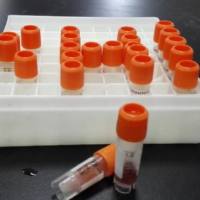The Use of M-FISH and M-BAND to Define Chromosome Abnormalities
互联网
1449
Multicolour fluorescence in situ hybridisation (M-FISH) and multicolour banding (M-BAND) are advanced chromosome painting techniques combining multiple chromosome- or region-specific paints in one step. M-FISH identifies all chromosomes or chromosome arms at once, whereas M-BAND identifies the different regions of a single chromosome. The use of either or both can improve the accuracy of karyotyping and help identify cryptic chromosome rearrangements. These probes are prepared by pooling multiple chromosome- or chromosome region-specific DNA libraries, each labelled with a unique combination of fluorochromes. Commercial probes are available, avoiding the need for probe preparation. In the protocol described here, a commercial probe is used. Well-spread metaphases are prepared according to standard techniques, followed by alkaline denaturation and application of the denatured probe. After an incubation period, the slides are washed. A fluorescence microscope with filter sets specific to the fluorescent labels is used for analysis, together with specialised image analysis software. The software interprets the combination of fluorochromes to identify each chromosome and produce a false colour image specific for each chromosome or region. The single colour galleries – which show the hybridisation patterns of the individual fluorochromes – are useful to help interpret and confirm the false colour images produced by the software, including ambiguous signals.








